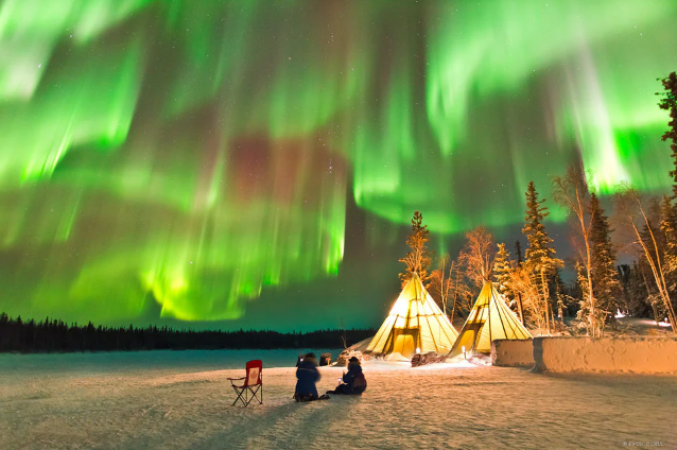
USA: According to skywatchers around the world, the best time to see the equinox aurora is between late March and late September. The same is true this year, when the equinox in March will bring breathtaking lights.
Although it is not fully understood, the orientation of the Earth's magnetic field is the most widely accepted theory for the relationship between the equinoxes and the auroras.
Since the beginning of time, scientists have observed a pattern where auroras increase during the two equinoxes and decrease during the solstices in June and December.
Also Read: How to check IPO allotment status?
According to data from the British Geological Survey, a significant magnetic storm occurs, on average, about twice as often in March than in June or July.
In the Northern Hemisphere, spring begins on the March equinox, while autumn begins in the Southern Hemisphere. The March equinox brings earlier sunrise, later sunset, and budding plants in the Northern Hemisphere, while the opposite occurs in the Southern Hemisphere: later sunrise, earlier sunset, and leaf fall. The equinox in India occurs at 2:54 AM on March 21 (Tuesday).
Also Read: ByteDance will be forced to sell TikTok or face a US ban which has angered Beijing
Twice a year, when the Sun is directly above the equator, the equinoxes occur. This is the only time of year when the amount of sunlight is approximately equal in the Northern and Southern Hemispheres.
The reason for the increased auroral activity Earth experiences around the equinoxes is explained by the Russell–McPherron effect. The solar magnetic field brought to Earth by the solar wind has north and south poles, like a magnet.
According to the theory, the north-south component of the solar magnetic field oscillates throughout the year in the same way that the Earth's axis does. The greatest fluctuations were found at the equinoxes.
When the north-south component of the solar wind is roughly opposite to the "north-south" component of the Earth's magnetic field, the geomagnetic storms that often cause auroras form.
This is exactly equivalent to the attraction between opposite polarity bar magnets. The equinox effect, which increases the frequency of auroras around the equinoxes, is another factor at work.
Also Read: China's leading CPU designer Loongson maintains a brave façade
Earth's magnetic poles are at right angles to the direction of the incoming solar winds during an equinox, which occurs twice a day. When this happens, magnetic storms intensify and the solar wind gets really strong. As the seasons change, Earth's poles point either farther or closer to the Sun, reducing this effect.